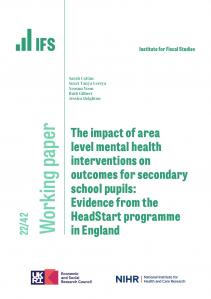On March 6th, the Chancellor will stand up and deliver what could be the final Budget of this parliament – although I wouldn’t be surprised if he tries to squeeze in another ‘fiscal event’ before the general election. Pre-election Budgets are sometimes ‘giveaways’, with goodies to appeal to voters. Even more common are net tax rises in the twelve months following a general election, as we saw in 1992, 1997, 2001, 2010 and 2015.
But should councils expect to be major winners, sharing in any pre-election largesse? I don’t think so. Indeed, councils are likely to have to wait until after the next election to have any clarity about their future funding in 2025–26 and beyond.
The Chancellor will certainly be hoping he can splash some cash. However, rather than increases in funding for public services, the focus is likely to be tax cuts. Indeed, the Financial Times reports indicative post-election spending plans, that already look tight, may even be cut back further in the Budget to create room for tax cuts.
Despite the announcement of a reduction in the main rates of National Insurance Contribution (NICs) paid by employees and the self-employed, the 2019 – 2024 parliament will still see the biggest increase in the tax burden as a share of national income since World War II. Indeed, the cut in NICs rates that came in at the start of January is set to undo only around one quarter of the effect of freezing income tax and NICs thresholds. This increase in the tax burden has prompted pressure from the Conservative backbenchers to announce further tax cuts (for example to income tax or inheritance tax), and the Labour Shadow Chancellor has argued that “taxes on working people are too high”. The temptation to use any wiggle room to announce pre-election tax cuts will therefore be strong.
How much scope for tax cuts the Chancellor will have is uncertain. It may not feel like it but public spending has risen alongside the tax burden over the current parliament – although around half of this relates to an increase in the cost of servicing the national debt as a result of higher interest rates. That means that under the OBR’s last set of forecasts last November, debt was set to continue rising as a share of national income over the next few years, and only barely fall in 5 years’ time, only meeting the letter of the Chancellor’s ‘fiscal rules’ by a narrow margin.
The hope will be that forecasts for borrowing and debt improve, opening up more space for tax cuts – indeed it was an improvement in November’s underlying borrowing and debt forecasts that enabled the NICs rate cut. The problem is if you use windfalls from improved forecasts to pay for tax cuts or spending increases, and accommodate weaker forecasts by borrowing more as has often been the case since 2010, borrowing and debt will rachet up over time. But it’s particularly tempting to do when dealing with that could be a different Chancellor’s concern.
Even if some money is found for public spending as opposed to tax cuts, councils may find themselves someway down the queue for additional funding. Canny campaigning and genuine concern in Whitehall at the evident pressures facing councils’ budgets led to £600 million extra being found in the final 2024–25 English local government finance settlement. This means if councils increase council tax by the maximum allowed, funding is set to increase by 7.5% in cash-terms year-on-year in 2024–25, compared to less than 3% for schools and just 1% for the English NHS (an amount that will almost certainly need to be topped up).
Coming off the back of an even bigger cash-terms boosts in funding in each of the last two years, English councils’ core funding is set to be 11% higher in real-terms in 2024–25 than in 2021–22, after adjusting for economy-wide domestic inflation. The reason it doesn’t feel like this is that the inflation faced by councils seems to have been significantly outpacing this. The Local Government Association has identified energy costs, temporary accommodation, home-to-school transport and children’s social care placements as seeing particularly big increases in costs, sometimes coupled with big increases in demand. Whether growth in these costs slows down will be vital for councils’ future financial health – and in turn, local service delivery.
Most important will be what happens in the next Spending Review. As it stands the overall spending envelope pencilled in by the Chancellor for 2025–26 onwards – even if it isn’t cut back in the Budget – implies cuts to many ‘unprotected’ areas, which traditionally has included funding for councils. When whoever is Chancellor after the next election sits down to share out this pain though, they may decide to top up spending plans – perhaps paid for by post-election tax rises. That is what we saw with both the 2015 and 2021 Spending Reviews. But even if this happens, how much of this would flow councils’ way is uncertain: there will be many calls on this funding, and other services can point to councils’ own revenue-raising powers via council tax during the inevitable horse-trading. More campaigning over funding would therefore beckon.
Returning to the Budget on March 6th, a focus on tax cuts as opposed to spending increases does not mean councils will necessarily go completely unmentioned. It’s a bit of a wildcard, and I’m certainly not advocating it, but could council tax be a target for a temporary tax cut? 2022–23 saw funding provided for £150 council tax ‘rebates’, administered by councils, as part of cost-of-living measures. If the Chancellor wanted a tax cut, including for households with incomes too low to pay NICs or income tax, that was both easy to make temporary and highly visible to voters, it could be tempting. That would mean extra net income for council taxpayers – but extra work for councils.








